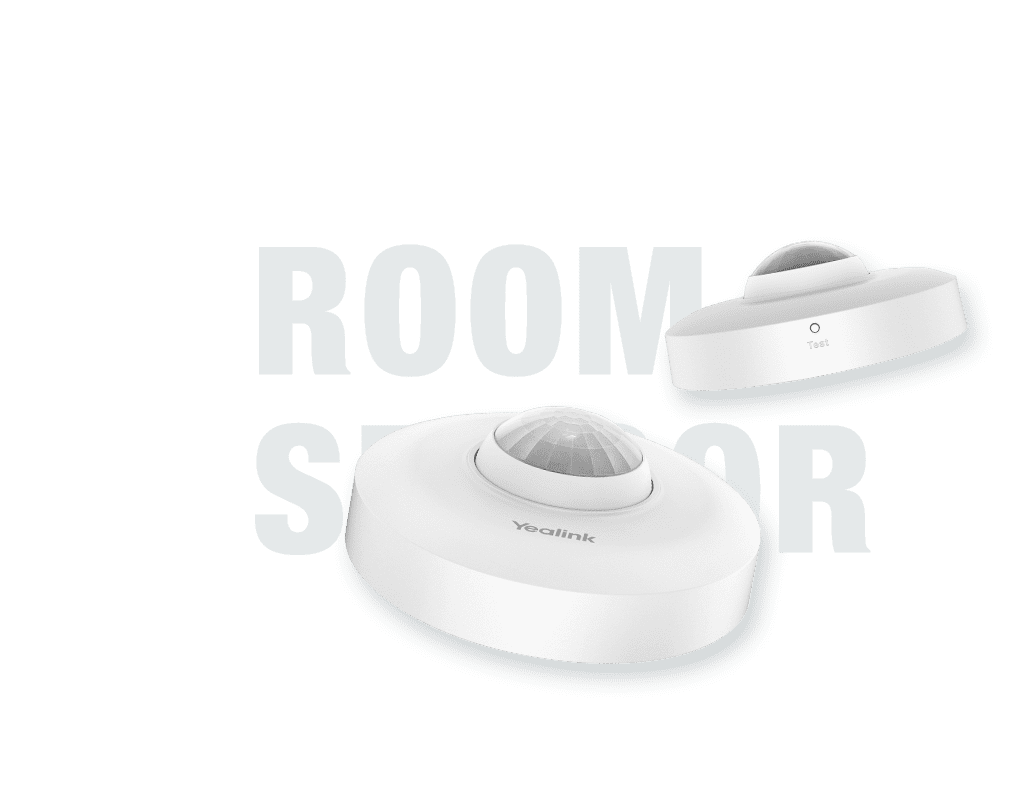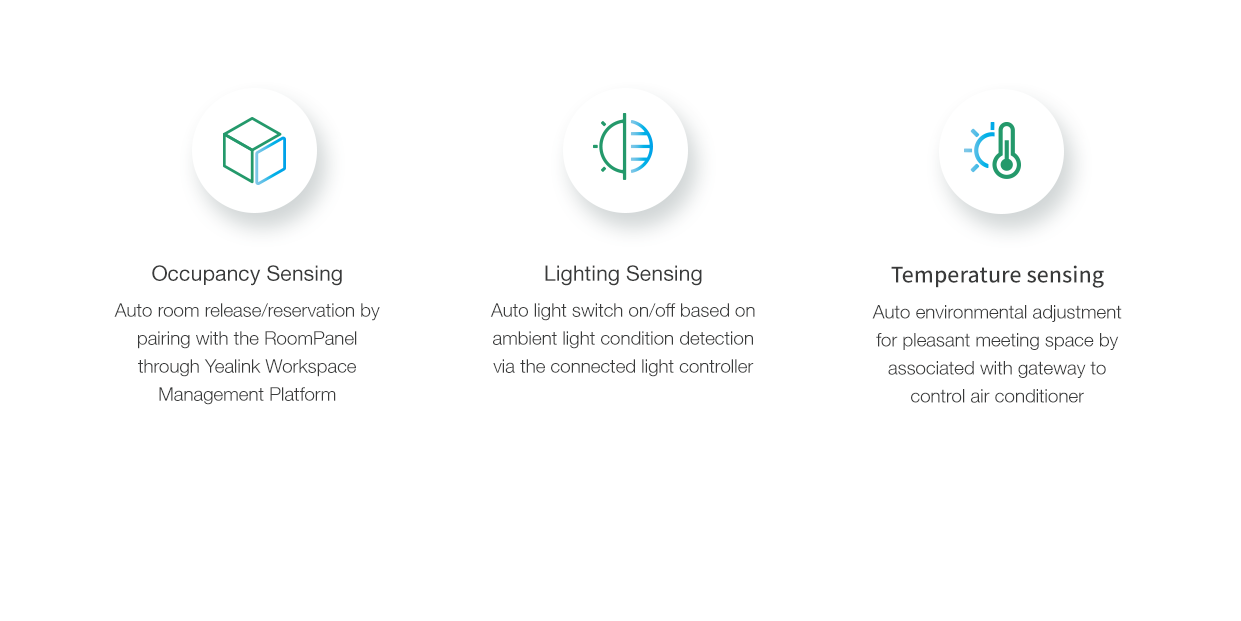Yealink RoomSensor
Sense the Environment, Build Smart Workspace
Yealink RoomSensor Enterprise Multifunctional Wireless Occupancy Sensor
Yealink RoomSensor, the enterprise-level wireless Passive Infrared (PIR) sensor, is enabled for multiple sensing features of space occupancy, light condition, temperature and humidity, etc. With the built-in Bluetooth 5.0 and lithium battery, it's compact and cable-free to deploy. Moreover, the RoomSensor can be associated with various IoT devices and Yealink Workspace Management Platform, to build an intelligent and energy-efficient workspace.
Remarkable Sensitivity, Reliable Transmission
Featuring passive infrared (PIR) technology, Yealink RoomSensor performs excellent occupancy detection with remarkable accuracy. The built-in Bluetooth 5.0 keeps the signal transmission stable and reliable.
Ideal and Scalable Solution for Multi-size Space
As a compact all-in-one sensing appliance, a single RoomSensor is ideal for usage in huddle to medium meeting rooms. And for large-sized ones, a multi-sensor network via Bluetooth mesh can be adopted to implement broader coverage.
Cable- and Trouble-free Installation
Powered by the replaceable lithium battery and wireless connectivity, the RoomSensor can be deployed without any cable. The magnetic design also makes the installation/maintenance easy and convenient. Moreover, the adjustable "lens" allows for different sensing area configurations and adds more adaptability to the deployment.
Integrate with IoT Terminals Bring About Smart Workspace
The RoomSensor is eligible for coordinating and linking with other intelligent IoT terminals, bringing features such as automatic check-in, lighting control, meeting room release and so on, to transform the traditional meeting rooms into smart workspace.


RoomSensor
A RoomSensor is a device that is used to monitor and measure environmental conditions within a room. It can detect various parameters such as temperature, humidity, air quality, light levels, and motion. These sensors can be used in homes, offices, and other indoor environments to improve the overall comfort, health, and safety of the occupants.
RoomSensors typically use various types of sensors, such as thermistors, hygrometers, and gas sensors, to measure the environmental parameters. The data collected by the sensors can be transmitted wirelessly to a hub or gateway, which can then be accessed by the user through a mobile app or web interface.
One of the main benefits of using RoomSensors is that they can help to optimize energy efficiency. By monitoring the temperature and humidity levels within a room, for example, a smart thermostat can adjust the heating or cooling to maintain a comfortable temperature while minimizing energy consumption. RoomSensors can also be used to detect occupancy, which can be used to trigger the automation of various systems, such as lighting and HVAC.
Overall, RoomSensors are becoming increasingly popular as part of smart home and building automation systems. They can help to improve the comfort, health, and safety of occupants while also reducing energy consumption and costs.

